I’ve paired this mid-fifties British 35mm camera with a converted lens that is normally fixed onto the front of a Yashica Electro 35 GS rangefinder. Turns out they go together rather well.
The camera came to me inexpensively, but with sticking shutter curtains and its original ‘kit’ lens, Corfield’s own Lumar-X 50mm f3.5. Initially I was less than impressed with its USP feature — TTL focusing with a periscope. To compose the shot, you use a conventional separate viewfinder mounted on the accessory shoe. To focus, there’s a similar-looking viewfinder barrel sticking up vertically out of the top plate. On the side of the barrel there’s a knob, which you push down against spring pressure. That pushes a periscope, with a 45° mirror attached to it, down in front of the shutter. Then when you look down the focusing finder, you can see a circular plain focusing screen. It displays a small area of the frame, in the middle and towards the bottom, and it’s reversed left-to-right. As it’s looking through the lens, you can fully open the aperture and focus precisely using any focal length lens you want to fit.
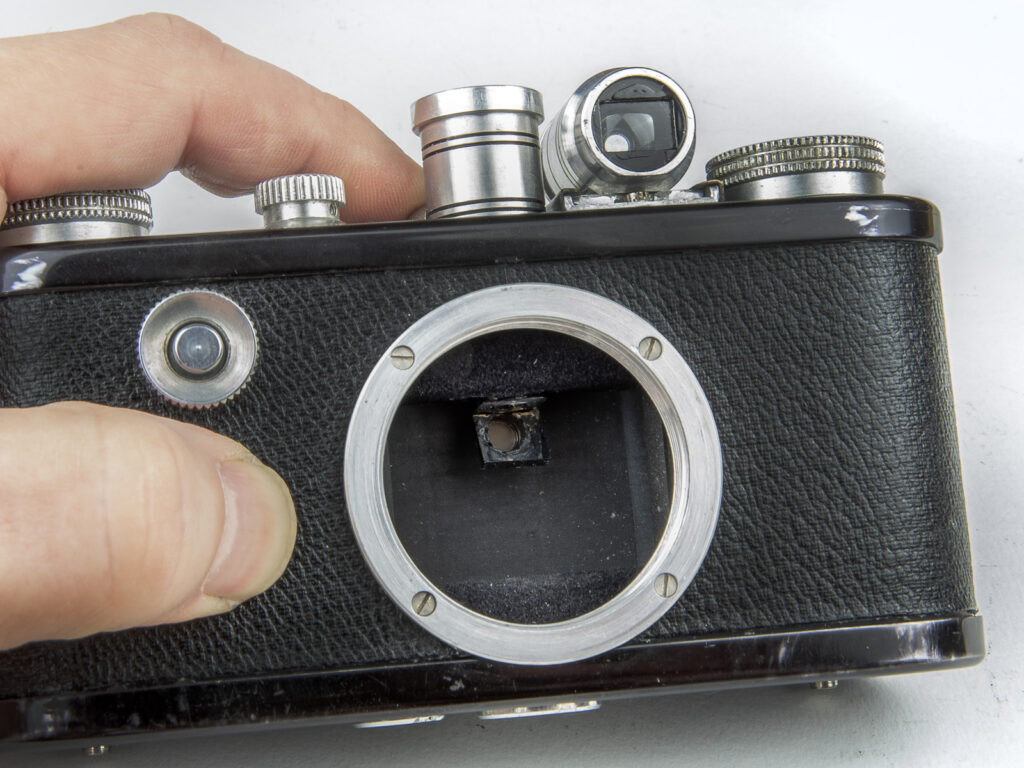
At least, that’s the theory. In practice, trying to focus a fairly slow (f3.5) lens with a tiny plain focusing screen is not easy. It’s quite dim, and the relatively large minimum depth of focus makes it a rather imprecise affair. I realised early on that getting the best out of this camera would need a much faster lens. The Periflex uses the standard 39mm Leica thread mount (LTM) so there are plenty of excellent fast standard lenses available. Unfortunately they’re all eye-wateringly expensive. That includes the Corfield Lumax 45mm f1.9, which I’m sure is very nice but at more than three hundred quid it’s out of the question.
I needed to come up with a cheaper option that would look good on the front of a vintage camera, so I started looking at 35mm rangefinders. Plenty of them have lenses that are suitably fast, and have the pleasing silver-polished look. The Yashica Electro 35 GS, with its 45mm f1.7 lens, looked like a promising option. It’s been reviewed a number of times on 35MMC, including a lens conversion to Leica M-mount. Like many rangefinder lenses, it’s constructed back-to-front compared to a typical lens for an SLR. The focusing helicoid is at the rear, causing the whole body to move in and out.
On eBay I picked up a non-functional Yashica for barely twenty quid, plus a new plain mount with an M39 LTM male thread for only £8.99. I took the Yashica to bits and held the lens against the front of the Corfield with the new mount fitted. Oh dear. With a split-prism focusing screen held against the film rails and the shutter open on B, I could see that it wouldn’t focus to infinity by quite a large margin. However, I’m a stubborn skinflint and I refused to give up. This lens needed to go on a diet.
The first step was to remove the entire shutter and self-timer mechanisms. There was now enough space to move the front and rear optical groups backwards by 2.0mm, within the lens body. Then I was able to lose another 1.2mm from where the lens body attaches to the focusing helicoid. That moved the optics back by 3.2mm in total, but it still wasn’t enough. The only thing left available to remove from the rear of the lens was the two lugs that engage with slots in the moving lens body, to stop the whole lot rotating with the focusing ring. With those gone, bingo! I could get infinity focus, but then the lens could just unscrew itself from the helicoid until it fell off. My slightly unconventional solution was to fit two aluminium blocks to the inside of the M39 thread mount, secured with two screws each (plus glue). The countersunk screw heads sit in an area on each side where I’ve ground away the bottom two turns of the thread. The top turn is left intact, so there’s no risk of cross-threading it.
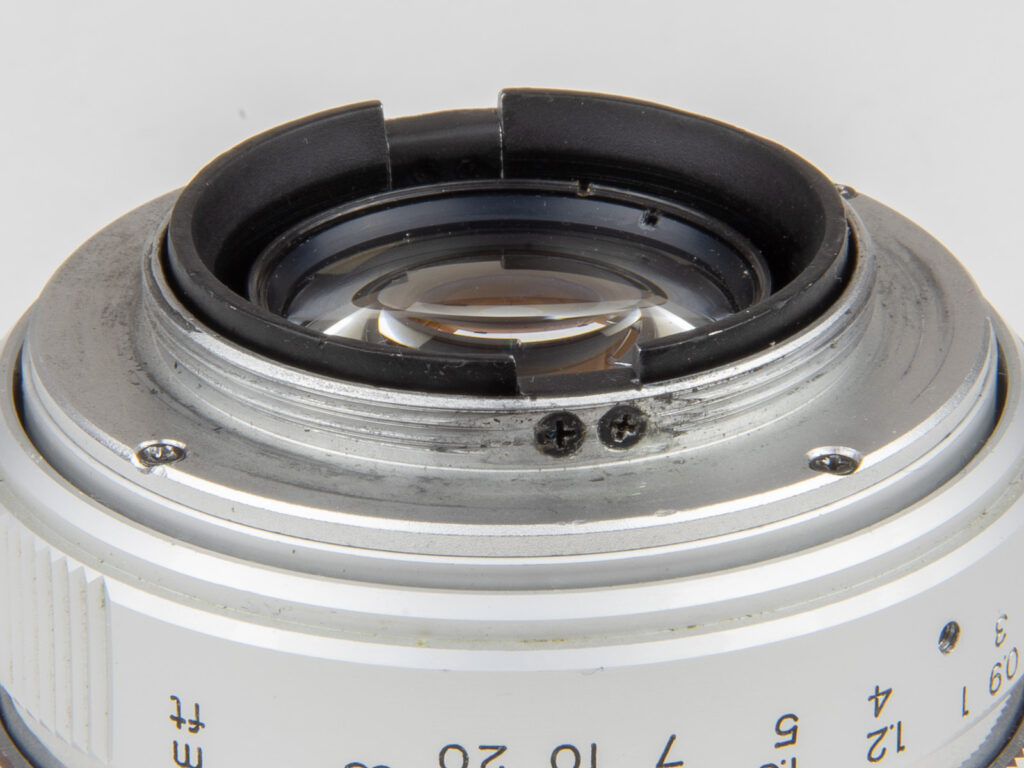
The lens was finished off with a new plain cylindrical piece at the front, to fit in place of the removed ‘B / Auto / Flash’ ring. It was salvaged from bits of an old Hanimex 135mm lens in my spares box, sanded to bare metal and then polished to a mirror finish. It had the right 55mm filter thread that would accept the Yashica name ring, and some supporting structure that I could attach to the front of the now-empty shutter mounting plate on the Yashinon.
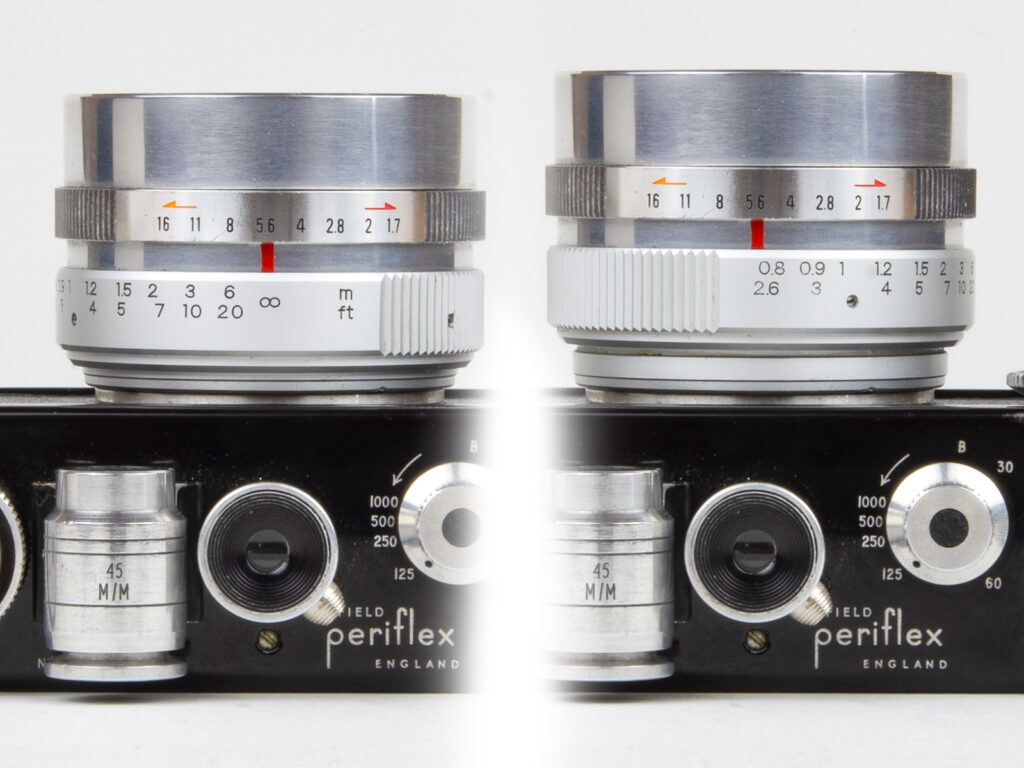
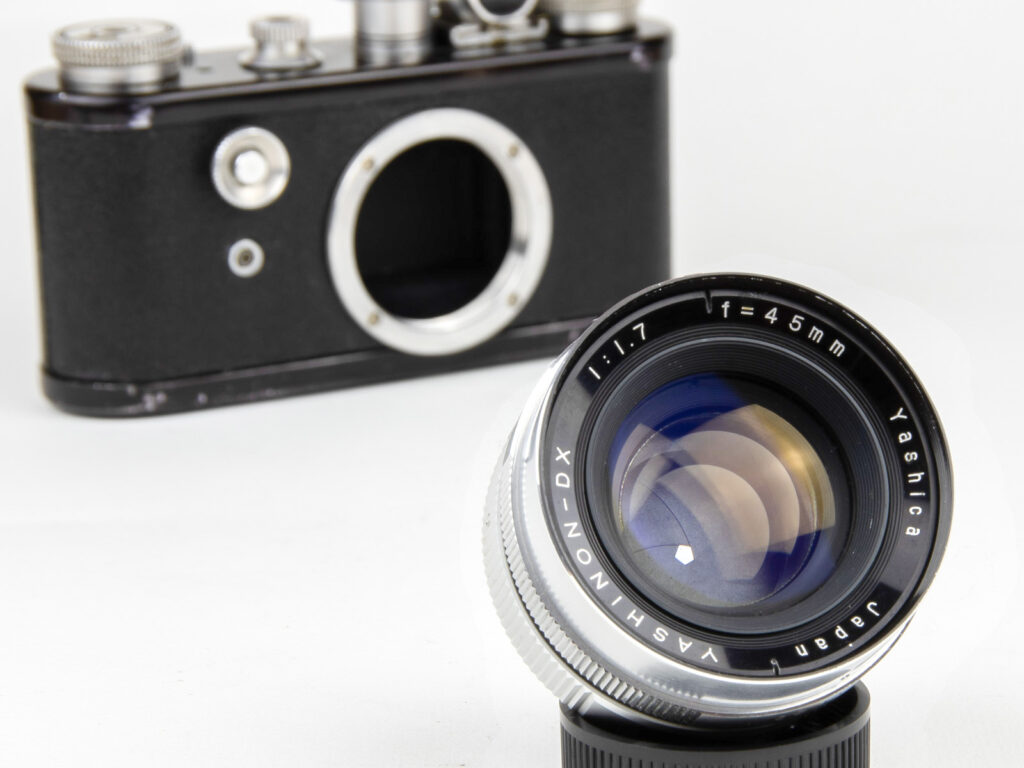
The camera itself and the sticking shutter curtains responded well to a good clean and service. The focusing screen can be calibrated by screwing it up and down within the periscope tube, so after setting the infinity stop on the lens I carefully adjusted the periscope to match the focus at the film plane. Luckily I was able to pick up a genuine Corfield 45mm viewfinder for not too much money. Now I was ready to give it a try.
The first roll of film showed a problem with internal reflections from the baffles that fit top and bottom, between the back of the lens mount and the shutter. They’re deliberately large, to stop you being tempted to try using a wide-angle lens that protrudes far enough into the camera to interfere with the periscope. Despite being painted matt black they were still too reflective, so I covered them with faux-velvet material.
The next roll of film (featured in this article) was Ilford HP5, shot on a trip to central London. For a number of the shots I chose a wide aperture, so I could practice the Corfield’s idiosyncratic focusing method, and gauge the sharpness of the lens. The results were pleasing, and no longer showed any problems with internal reflections. Processing the film showed a couple of characteristic features. One is the variable frame spacing. There’s no sprocket, and it’s just a half-turn of the wind knob and take-up spool to advance the film (the shutter is cocked separately).
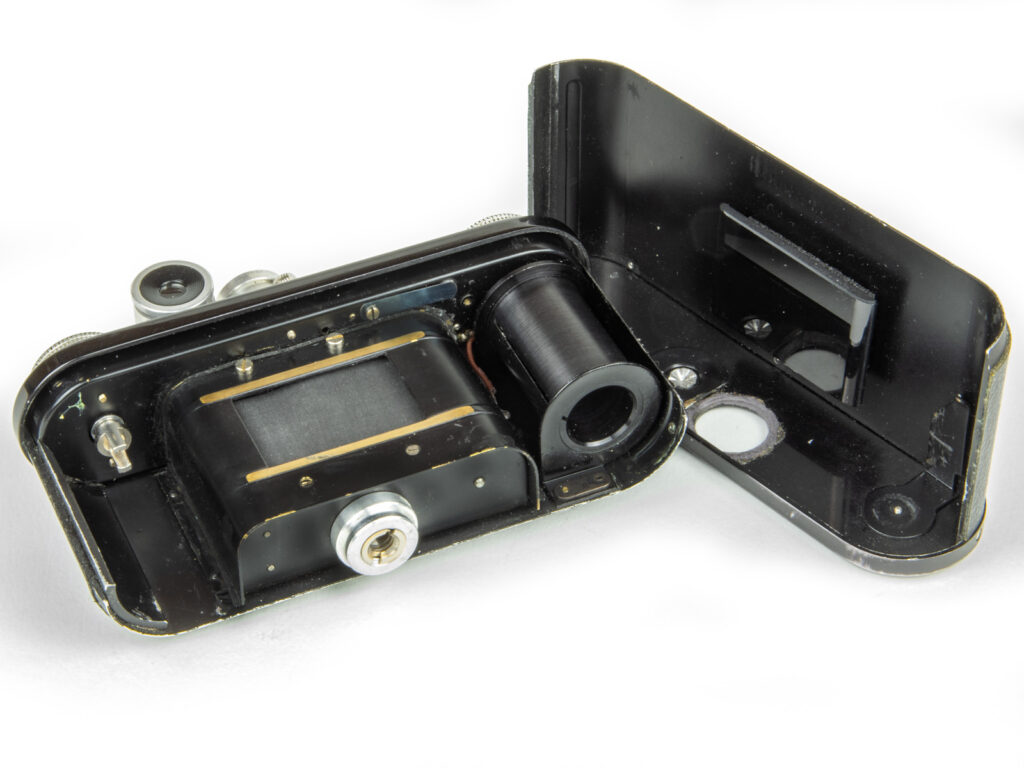
Despite the very large diameter of the spool, the frame spacing gradually changes from about 1mm at the start of the film to about 8mm at the end of it. The other feature is that there are no film guides, so the vertical positioning of the images is all over the place. It can easily overlap the perforations on one side, and leave a big gap on the other. I ought to find a way of fitting some guides that won’t cause any problems with the pressure plate, which is made of glass and stuck to the inside of the camera back with spongy foam.
I’m keen to try it with other lenses, although I would probably have to use a spacer-adapter and an SLR lens for wide-angle. The main limitation is finding an accessory viewfinder for shorter focal lengths that fits in the narrow space available, and isn’t too tall to prevent use of the focusing finder.
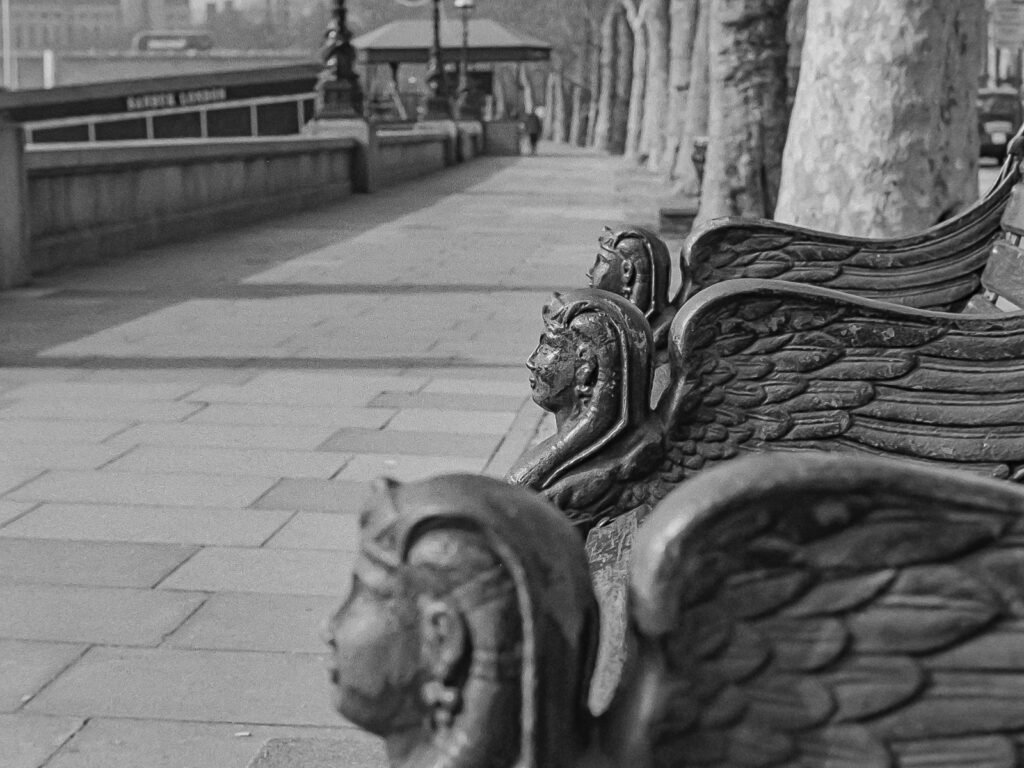
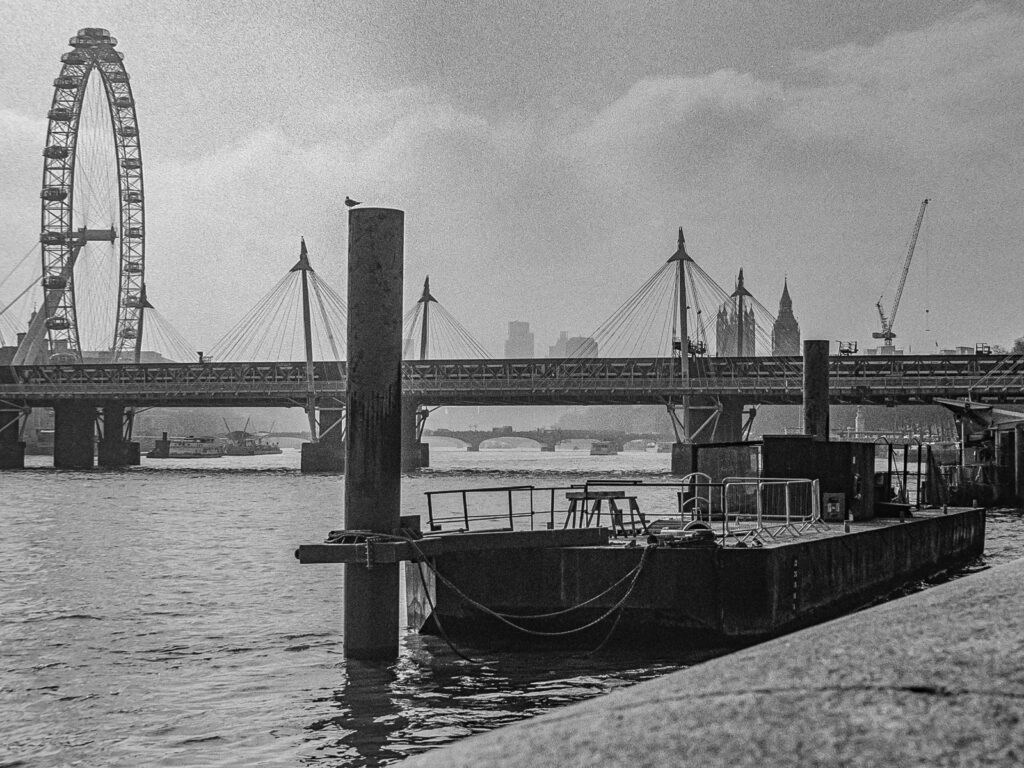
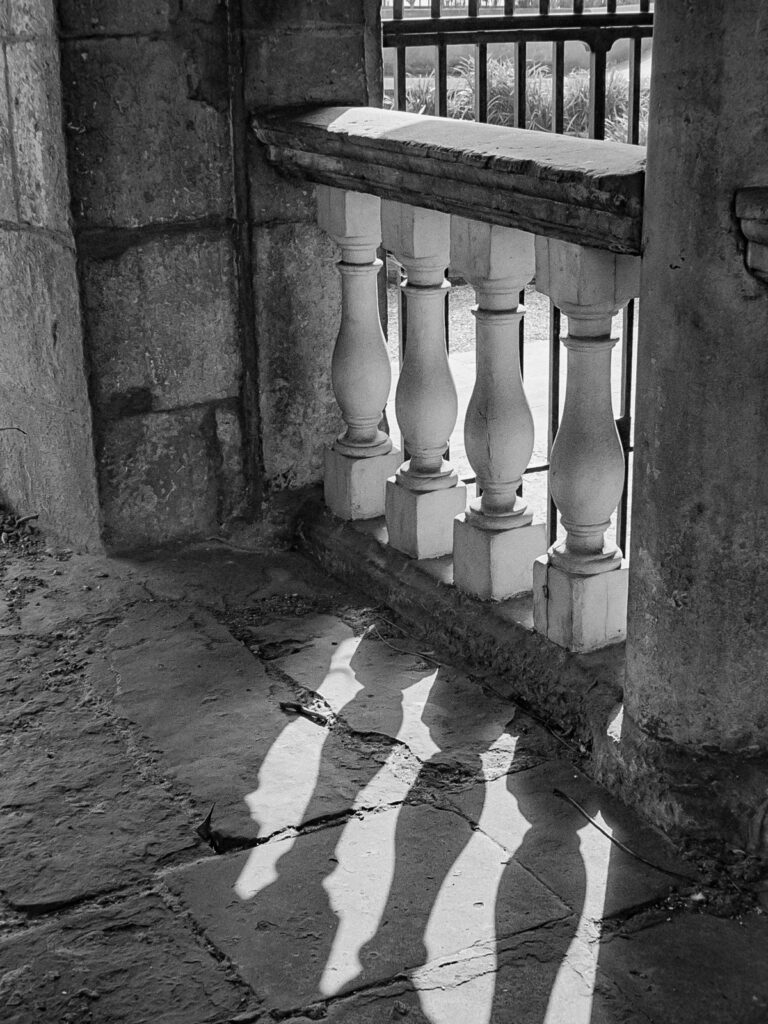
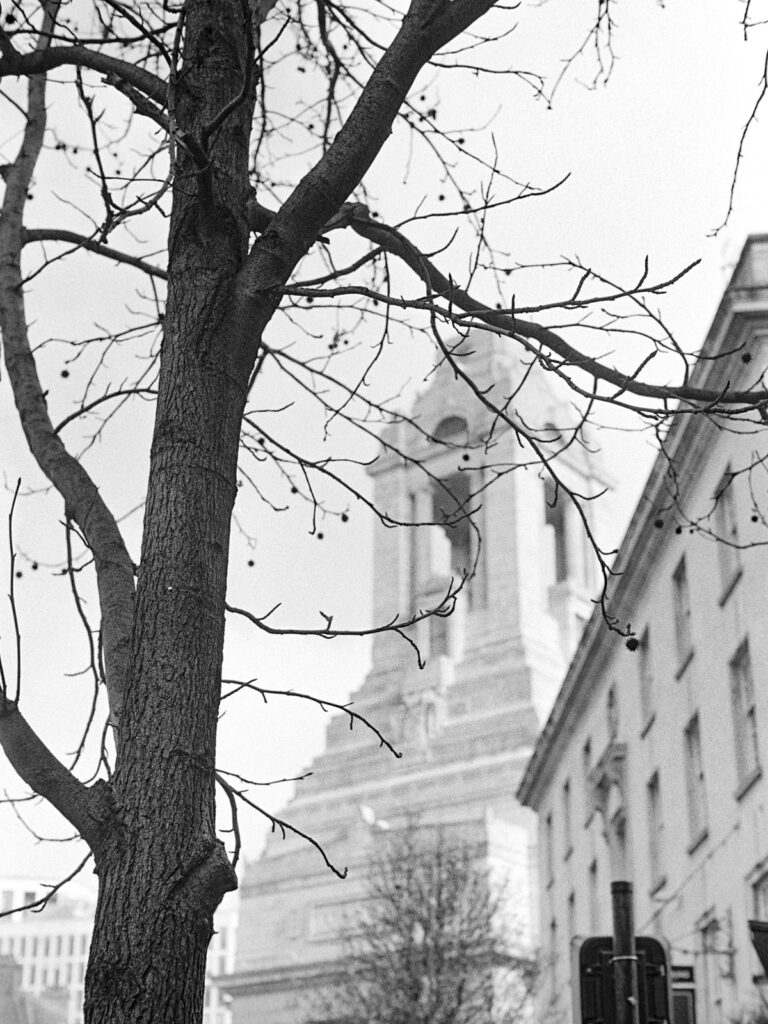
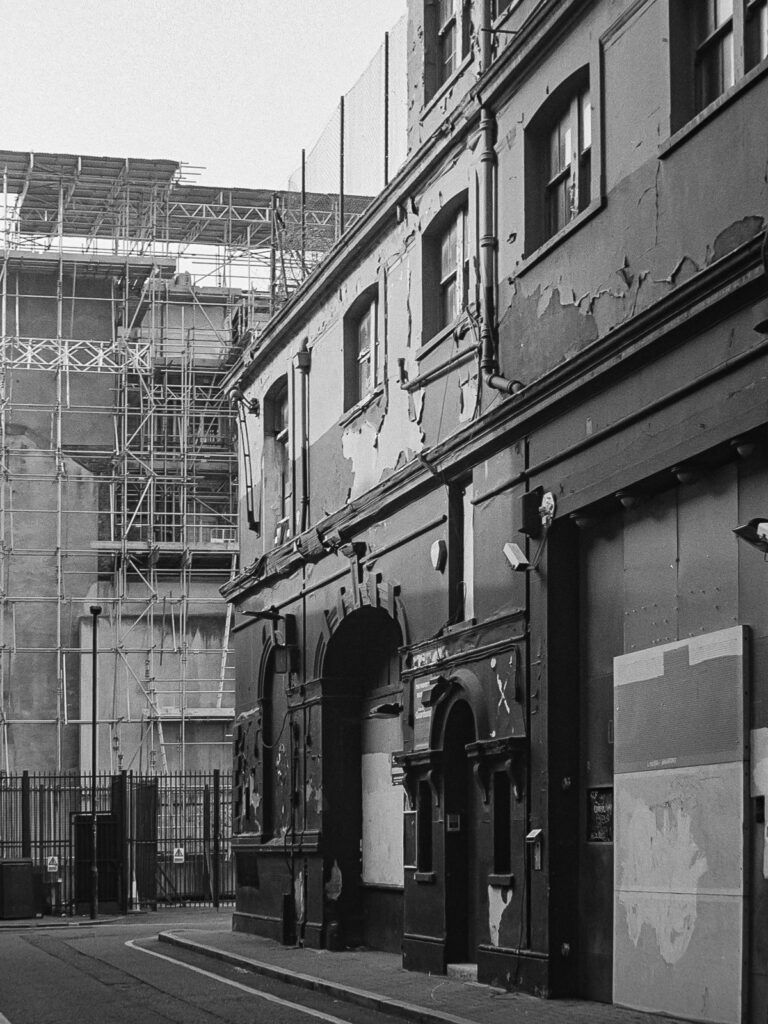
Share this post:
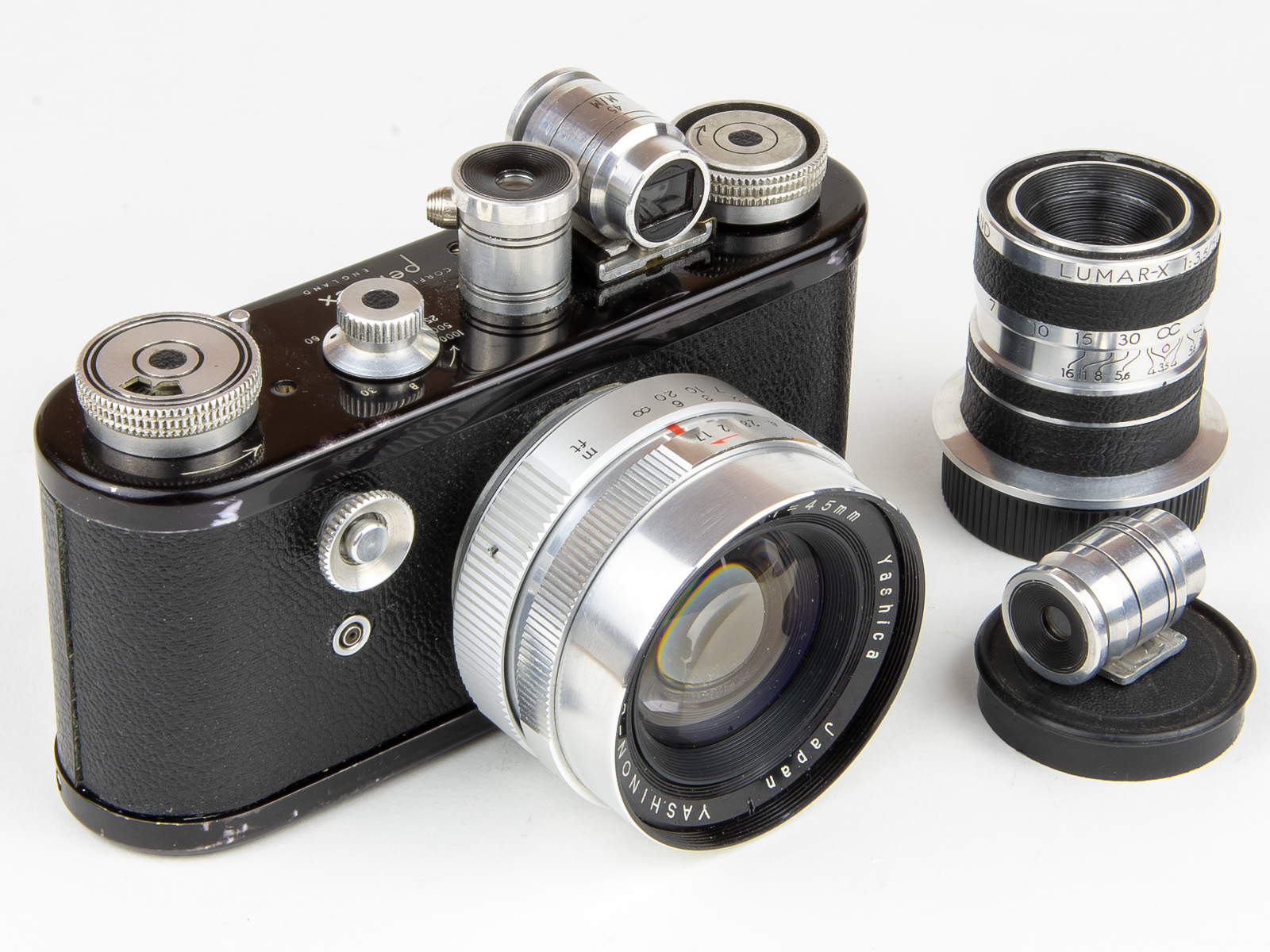
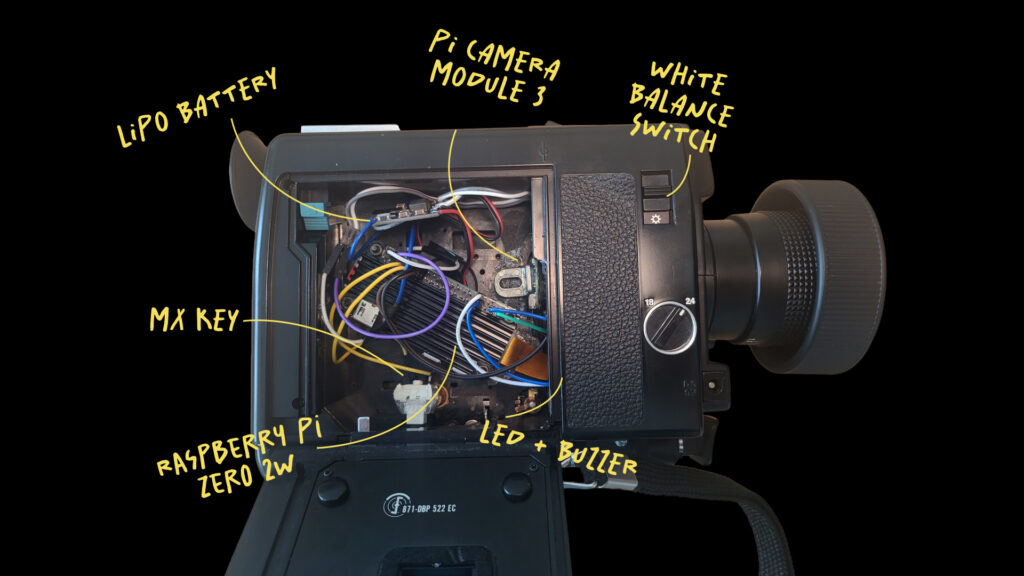
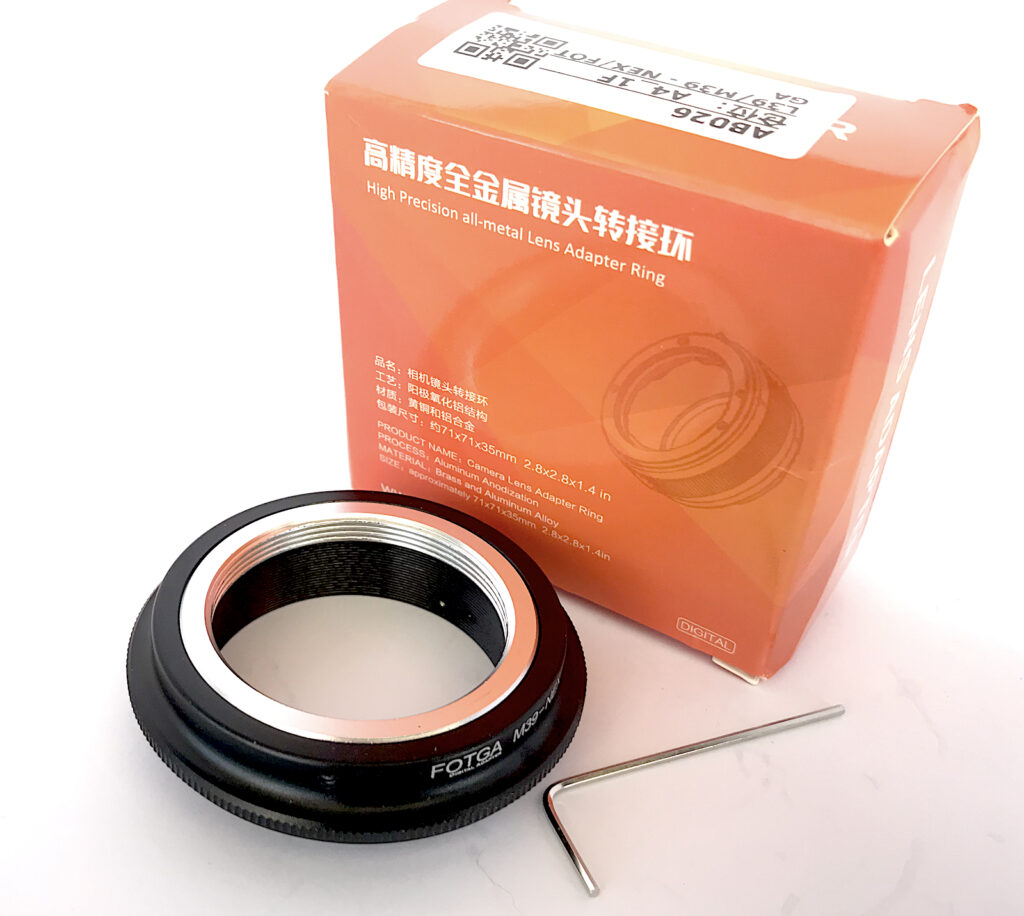
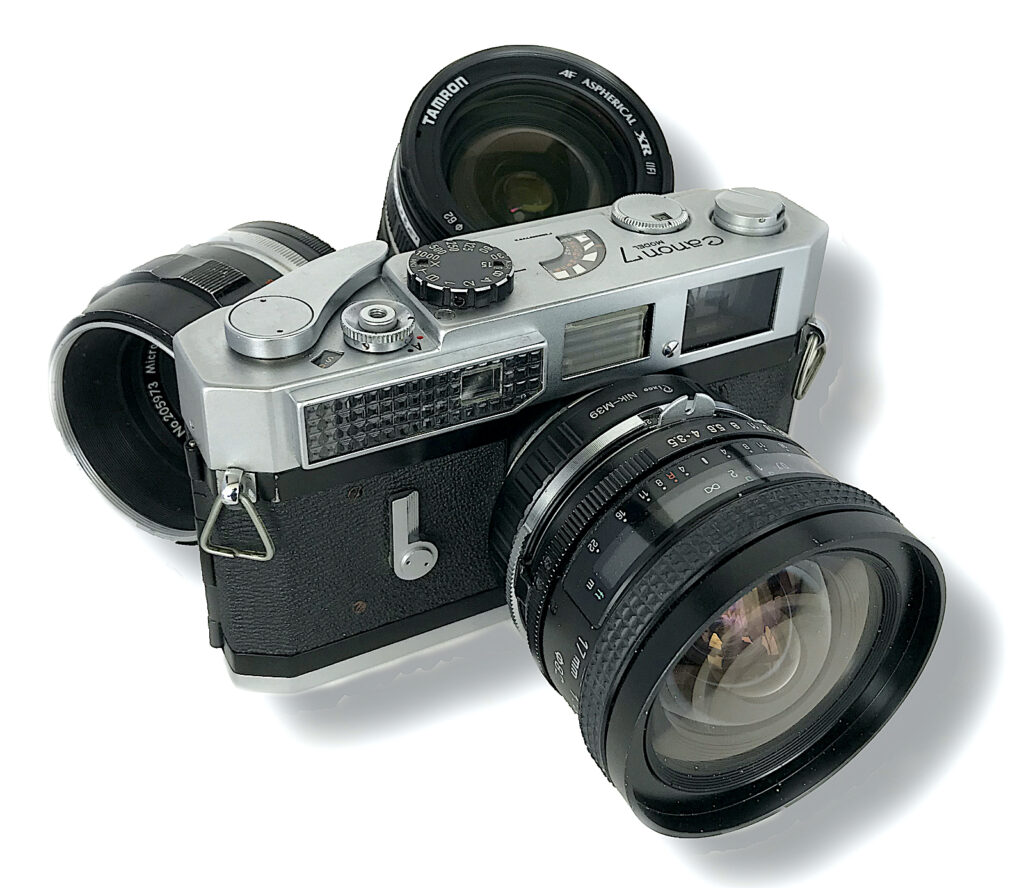
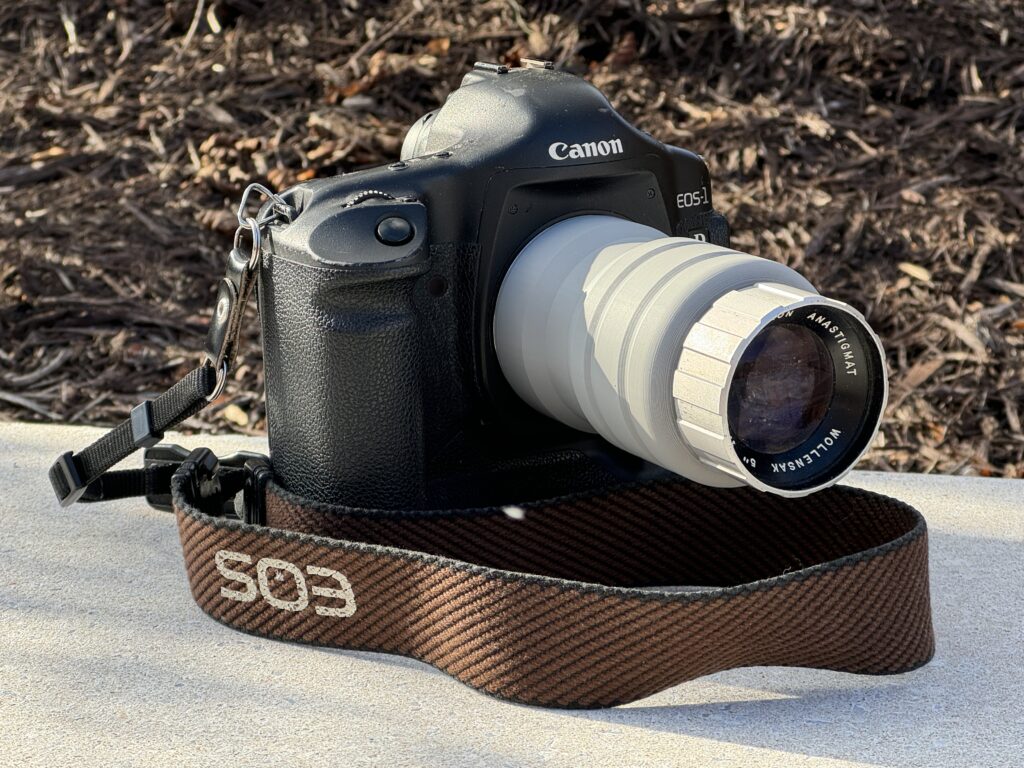




Comments
Geoff Chaplin on Adapting a Yashinon-DX 45mm f1.7 for a Corfield Periflex
Comment posted: 21/05/2024
Comment posted: 21/05/2024
Graham Orbell on Adapting a Yashinon-DX 45mm f1.7 for a Corfield Periflex
Comment posted: 21/05/2024
Comment posted: 21/05/2024
Ibraar Hussain on Adapting a Yashinon-DX 45mm f1.7 for a Corfield Periflex
Comment posted: 21/05/2024
Nice one
Comment posted: 21/05/2024
Curtis Heikkinen on Adapting a Yashinon-DX 45mm f1.7 for a Corfield Periflex
Comment posted: 21/05/2024
Comment posted: 21/05/2024
Comment posted: 21/05/2024
Comment posted: 21/05/2024
Richard Noll on Adapting a Yashinon-DX 45mm f1.7 for a Corfield Periflex
Comment posted: 21/05/2024
Comment posted: 21/05/2024
Alexander Seidler on Adapting a Yashinon-DX 45mm f1.7 for a Corfield Periflex
Comment posted: 22/05/2024
Comment posted: 22/05/2024
Gary Smith on Adapting a Yashinon-DX 45mm f1.7 for a Corfield Periflex
Comment posted: 22/05/2024
Comment posted: 22/05/2024
vincentbihler on Adapting a Yashinon-DX 45mm f1.7 for a Corfield Periflex
Comment posted: 24/05/2024